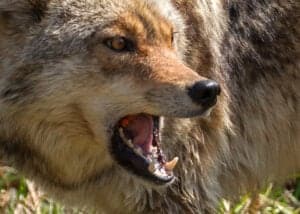Coyotes are known for their wily personality and resilient nature. These canines make their home throughout the United States, Mexico, and Canada. They can survive extreme cold thanks to their thick winter coats, and they are equally well adapted to withstand harsh desert environments.
With this in mind, it’s not a surprise that coyotes make their home in every state in the U.S. except for Hawaii. Coyotes are present throughout Ohio. Here’s everything you need to know about these intelligent creatures, where they might show up in the state, and Ohio’s coyote hunting rules.
Species Overview — Coyotes
The coyote (Canis latrans) is a species native to North America. These canines are smaller than their close cousin, the wolf, and are typically grayish-brown in color, with pointed ears, a slender muzzle, and a bushy tail, according to the Urban Coyote Research Project.
Coyotes are often depicted in stories and folklore as cunning, sly, and deceitful. These creatures are certainly smart and adaptable. Their smaller size makes it necessary for these canines to be resourceful in order to survive.
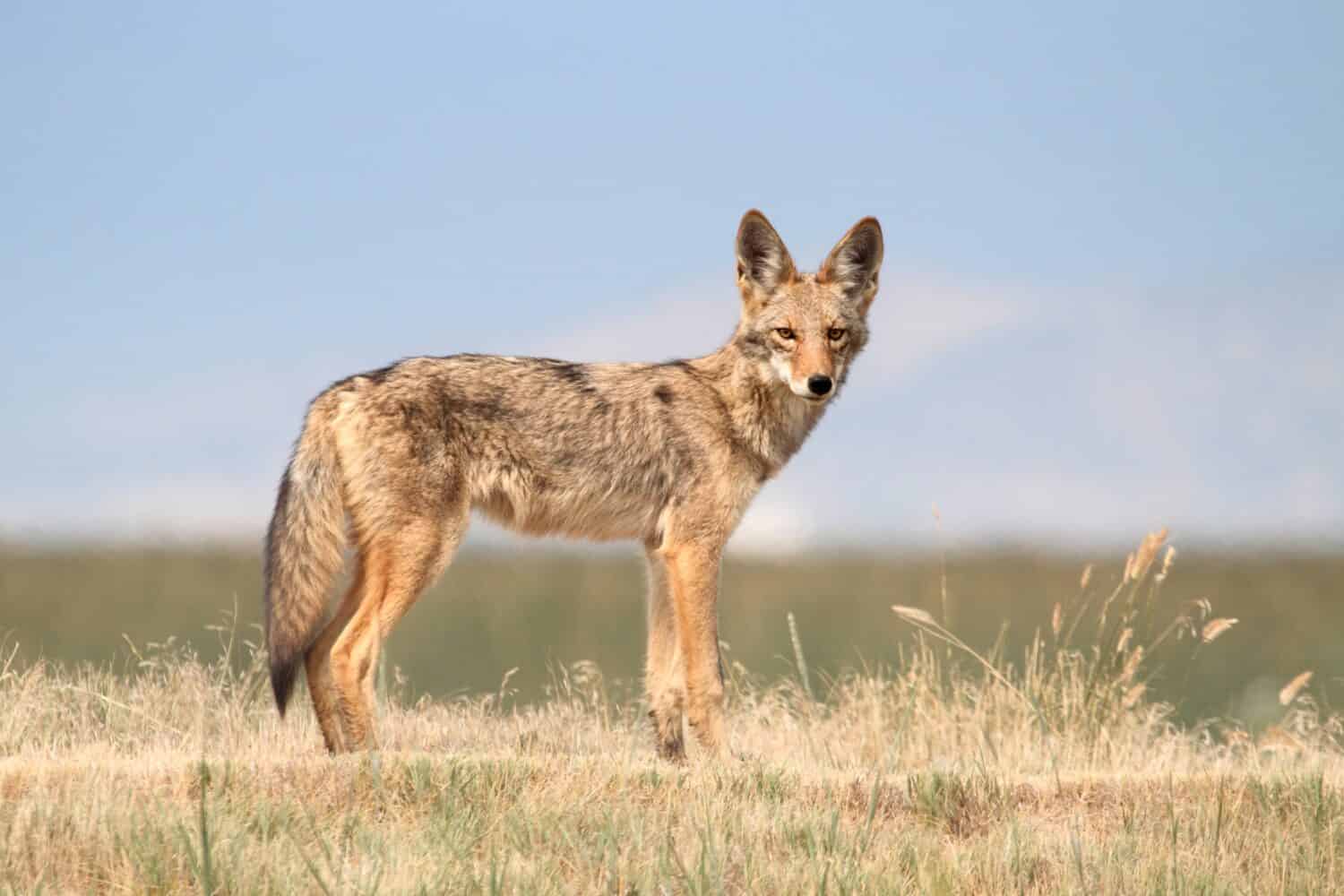
Coyotes are incredibly adaptable creatures capable of surviving in a variety of different environments.
©Steve Byland/Shutterstock.com
Social Behavior and Reproduction
Coyotes are often thought of as solitary animals, but they actually have a highly organized social system. A pack usually consists of an alpha male and female and a few other coyotes. Packs work together to defend their territories from other groups.
Coyotes typically hunt and travel alone, which may have led to the idea that they do not form packs. These creatures can become solitary animals for a time, typically after leaving a pack and looking to join a new group or form their own territory.
It is believed that coyotes are monogamous and mate for life. Coyotes only build and utilize dens to prepare for the birth of their pups. Female coyotes typically begin looking for or building a den after a gestation period of 62 to 65 days.
Coyotes give birth to a litter that usually consists of between four to seven pups. They have an incredible ability to adjust the size of their litter based on resources available, such as food. Six weeks after birth, pups begin to leave their den and travel short distances with their mother.
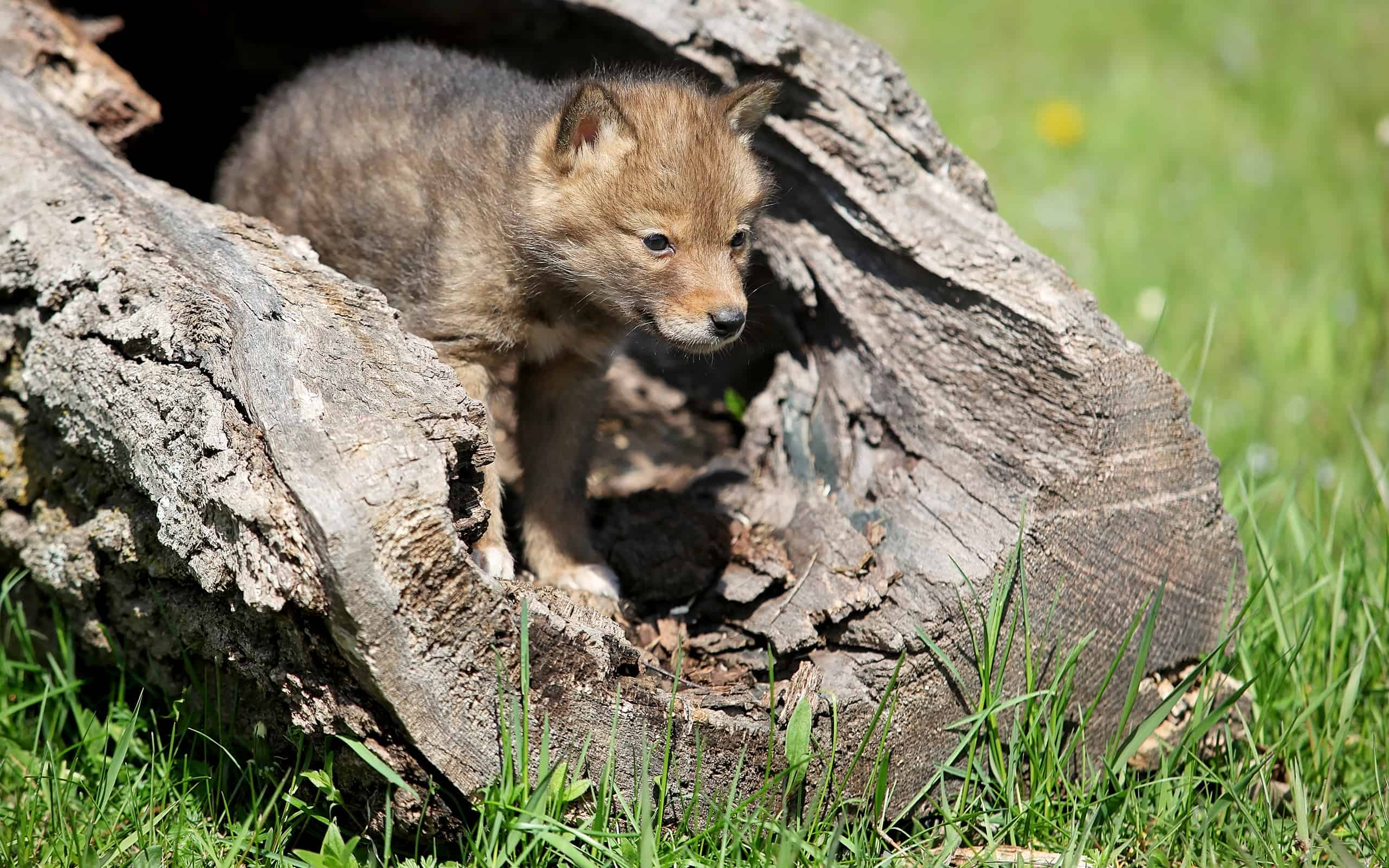
Young, coyote pups begin to venture out of their den for short distances at around six weeks old.
©Lynn_Bystrom/iStock via Getty Images
Diet and Hunting
Coyotes are omnivores and opportunistic feeders. This means they will adjust their diet depending on what is available. Coyotes are also nocturnal, so they perform most of their activities, including hunting, at night.
For the most part, coyotes hunt or scavenge small prey such as rodents, though they are capable of taking down larger animals, such as deer. Coyotes also eat fruit, such as berries that fall from trees.
Threats to Coyotes
Coyotes are listed under “least concern” on the IUCN Red List. Thanks to their adaptability and versatility, it’s no surprise that coyotes are able to thrive in a variety of environments. Adult coyotes have few natural predators.
Animals that may kill and eat coyotes are gray wolves, cougars, American black and grizzly bears, and the Canada lynx. American alligators and even golden eagles have been known to kill coyotes as well.
Coyote pups are especially at risk, but they are usually under the protection of adult coyotes until they can fend for themselves. Wolves kill more coyotes than any of the predators listed.
Controversy
Humans also play a role in killing coyotes and there is some controversy surrounding the killing and trapping of these animals.
In the U.S., hunting regulations are primarily determined by the state or province. In some states, such as Ohio, there is no closed season for hunting coyotes, and no limit as to how many coyotes a hunter can kill.
Perhaps a large part of the reason for this is that coyotes are often blamed for the loss of livestock and cited as a nuisance. Predator Defense argues that coyotes are not a major source of livestock loss for ranchers and that it is better to use nonlethal methods to protect sheep and other animals from coyotes.
Additionally, some research suggests that killing coyotes indiscriminately actually increases their numbers. For example, through decades of research, Dr. Robert L. Crabtree, one of the country’s foremost wildlife ecologists, has found that indiscriminate killing of adult coyotes actually boosts coyote populations. It reportedly causes reproductive rates among females to increase and drives coyotes to target unnatural prey sources.
Estimated Population
Coyotes are not native to Ohio, but today they are present in all 88 counties of the state. Reports vary on when exactly coyotes arrived in Ohio, and there is no exact number of how many coyotes live in the state. However, the Ohio Department of Natural Resources states that coyotes were present in Ohio by the 1930s, and distributed statewide by 1988.
Today, coyotes are common in Ohio and may be considered a nuisance species. Coyotes already have few natural predators and most of the few animals that might prey on coyotes do not live in Ohio. Wolves are one of these natural predators.
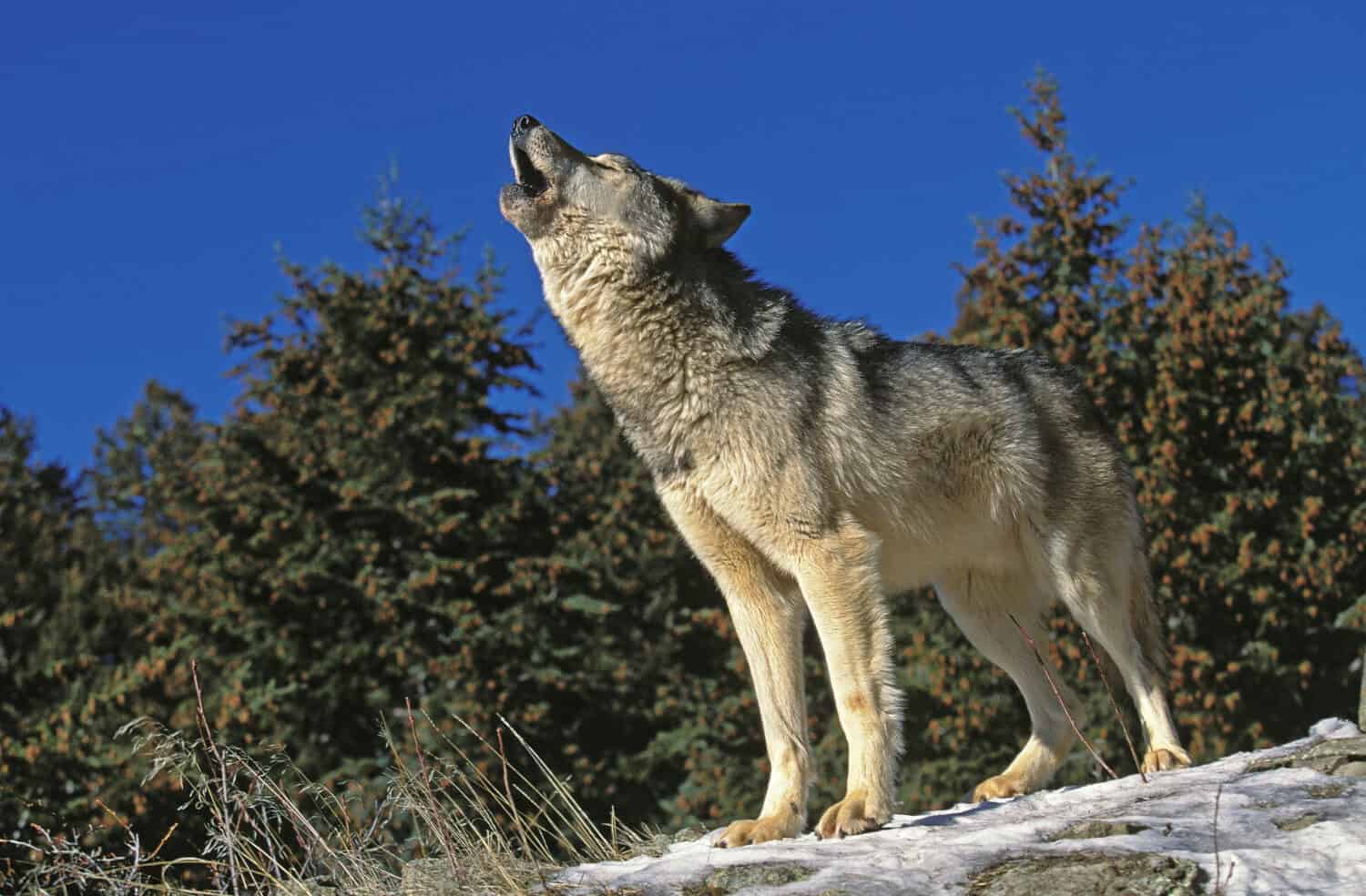
Coyotes are smaller than their wolf cousins, which are no longer found in Ohio.
©slowmotiongli/Shutterstock.com
Until 1878, wolves made their home in the wilderness of Ohio, writes Metro Parks. Unfortunately, European settlers destroyed many of these creatures’ natural habitats and began hunting the wolves’ sources of food. Eventually, wolves and other large predators like pumas and black bears were killed or driven away from the area.
When coyotes arrived several decades later, they found Ohio was free from their natural predators and had been converted into vast areas of farmland for them to roam. With their adaptability, coyotes thrived in the area.
Coyote Safety
Although coyotes are potentially dangerous to humans, attacks on grown adults are rare. Still, it’s best to use caution if you come across one of these creatures.
First, the Ohio Department of Natural Resources recommends keeping coyotes out of your yard by removing things that may attract them before nightfall, such as pet food or garbage. It’s also important to keep small pets inside at night when coyotes are most active.
If you encounter a coyote while walking, hiking, etc., most resources recommend employing some form of “hazing” to help maintain the animal’s fear of humans. This involves standing tall, waving your arms, clapping your hands, or shouting to make the coyote run away.
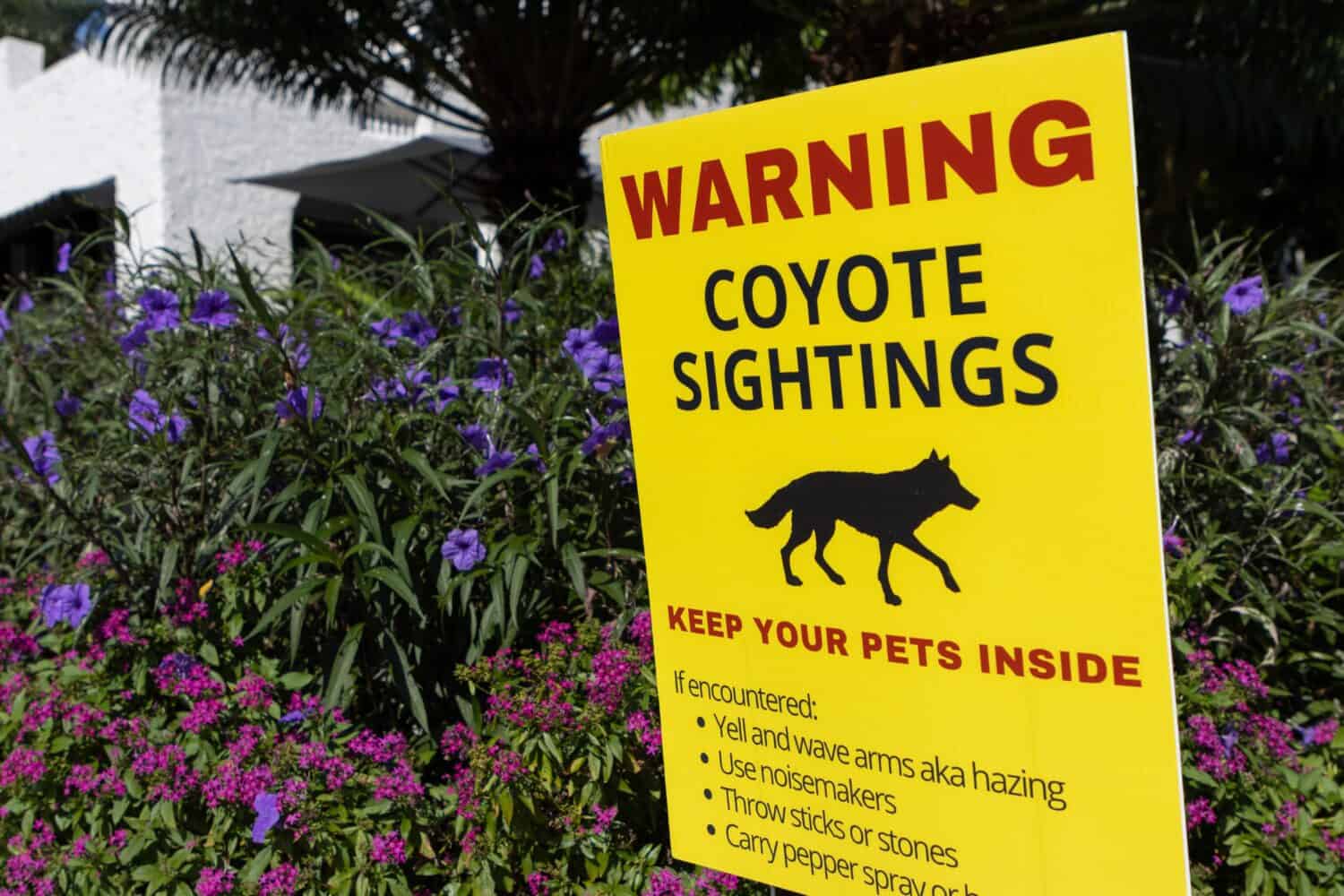
Stay safe from coyotes by employing “hazing” tactics such as yelling and waving your arms.
©Ajax9/Shutterstock.com
Common Locations
Coyotes are present throughout the state of Ohio, but where specifically can they be found? Coyotes are adaptable creatures, but they prefer open areas such as the prairie or desert. This is one factor that attracted them to the open farmland in Ohio.
Coyotes may also show up in urban environments, though they will likely avoid residential, commercial, and industrial areas. Instead, they’ll appear in wooded patches, parks, or golf courses.
Hunting/Trapping Rules
Hunting and trapping coyotes is allowed in Ohio, though there are a number of rules and regulations. For example, only certain weapons can be used to hunt coyotes. They include the following:
- Longbow and bow
- Cross
- Handgun: Any caliber
- Rifle: Any caliber
- Shotgun: 10 gauge or smaller
- Airgun
Hunters must also have all the valid licenses and permits necessary. As of 2020, the Columbia Dispatch reported that bag limits are next to nonexistent and that coyote hunting and trapping is legal nearly year-round.
In the past, the Wildlife Division proposed restricting coyote trapping to the normal trapping season for animals such as foxes, which lasts from early November to midwinter. The division eventually withdrew this proposal.
According to the Ohio Department of Natural Resources, while rifles and night vision scopes are legal for coyote hunting, the use of rifles and night hunting is prohibited between 30 minutes after sunset and 30 minutes before sunrise during any deer gun and deer muzzleloader seasons.
Thank you for reading! Have some feedback for us? Contact the AZ Animals editorial team.






